I’m on a quest to catch a fish in each of the 50 U.S. states – and to use each adventure as a means to explore conservation, the latest fisheries research and our complicated connections to the natural world.
I’m drawn to wilderness hot springs, but not for the reason you think. I’m not here for the soak. I’m here for the fish.
The blue, clear waters shimmered before me, bringing to mind the Caribbean. And indeed, yesterday a group of scuba divers appeared and disappeared along the surface, calling out instructions to each other. Today, I had the place to myself. I was in the middle of the Utah desert, at a 10-acre lake down miles of bumpy, dusty road. And I had a fishing rod.
The lake is known as a trophy largemouth bass fishery. Yesterday, I caught some of those bass, although they weren’t my target. Today, I decided to check out some of the wetlands and smaller lakes that ringed the main one.
As I walked along the desert waters, I spotted a swirl of fish. I squeezed a small split shot onto my ultralight line, rigged a maggot and flicked it out. Barely had my bait hit the water when the surface splashed and my line tightened. I reeled and quickly saw it was no largemouth bass. The markings on its sides gave it a zebra-like appearance, although this fish is commonly called the giraffe cichlid. It is native to Lake Malawi in southern Africa.
Now it is also found in the middle of the Utah desert.
The cichlids were hungry. Every cast was followed by an immediate take. After a few fish, I caught a mature giraffe cichlid, with a bright blue head and yellow sides with black mottling. I knew it didn’t belong here. It was also one of the most beautiful fish I’ve ever caught. I can hold these two conflicting thoughts in my head, and often do.
Not Too Hot, Not Too Cold
Among my social circle in the western United States, an isolated, wild hot spring is the ultimate hiking destination. And don’t get me wrong. I enjoy a soak in warm water as much as the next person. But then again, sometimes the idyllic hot pool turns into a scene reminiscent of spring break, with hordes of drunken, obnoxious partiers. I’ve seen some of my worst displays of humanity at hot springs.
If it’s just me, I’m not going to drive hours on bumpy roads or trek for miles to reach warm water. But the promise of weird fish? Now we’re talking. Rumors of fish have led me on wild goose chases and have had me casting lines in the strangest of places. Because, often, where you have warm water, you have exotic fish.
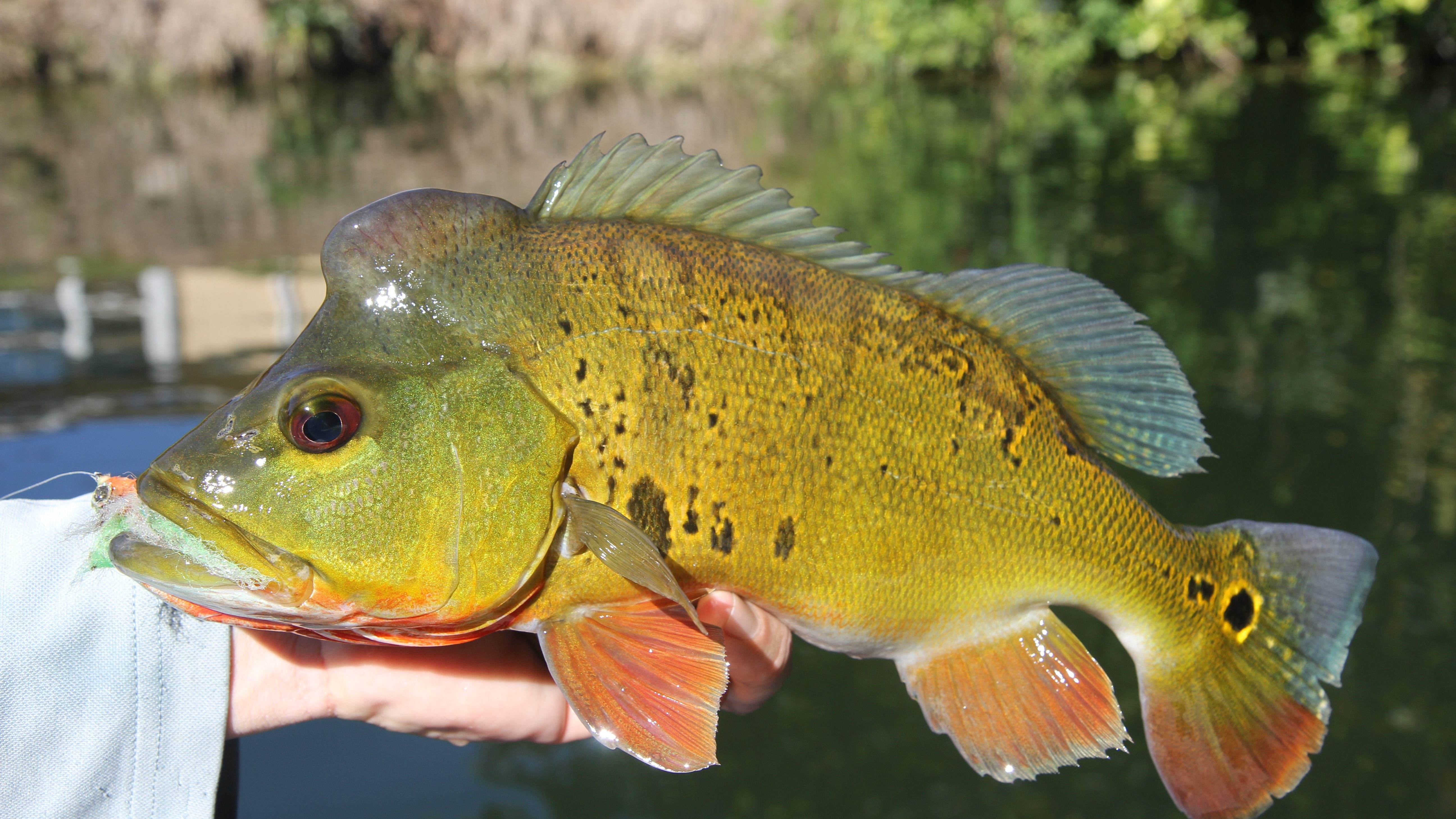
The most obvious example is South Florida, where a cast into a canal might land you a Mayan cichlid from Central America, a peacock bass from the Amazon or a walking catfish from Southeast Asia. There are clown knifefish and jaguar guapote and eastern happies. Recently, the “river monsters” known as arapaima were documented. For anyone who follows invasive species issues, this is not at all surprising.
But what many don’t realize is, this isn’t just a Florida phenomenon. In fact, tropical fish in North America are kind of like Goldilocks. If the water stays not too hot, and not too cool, you likely will find exotic fish. This is true for an urban canal in Phoenix. It’s true for a wetland in Houston. It’s also true of hot springs found in seemingly pristine national forests and national parks.
Most hot springs are too hot for fish to eke out a living. But there are some that are more warm springs. These are where you find the fish. As an added bonus, the warm springs tend to not be popular places to soak, so you won’t have to share the space with obnoxious conspiracy theorists and people engaged in behavior you wish you could unsee.
The fish are as much an artifact of human misbehavior as the discarded beer cans you often find at such places. People get tired of pets. They set them free. This is why parrots fly around Los Angeles, pythons gobble up Everglades wildlife and stray cats stalk your bird feeder. Fish may be less obvious, but look in the warm water, and you’ll see discarded pets.
They shouldn’t be there. But still, I seek them out with my fishing rod. Many angler friends are mystified at why I would do this. I love and value native fish, of course. But I admit I have always been drawn to the weird side of nature and the outdoors. I’ll fish anywhere and delight in finding fish in offbeat locales. And there’s a treasure hunt element to this. What will I find in the warm spring? And what story does it tell?
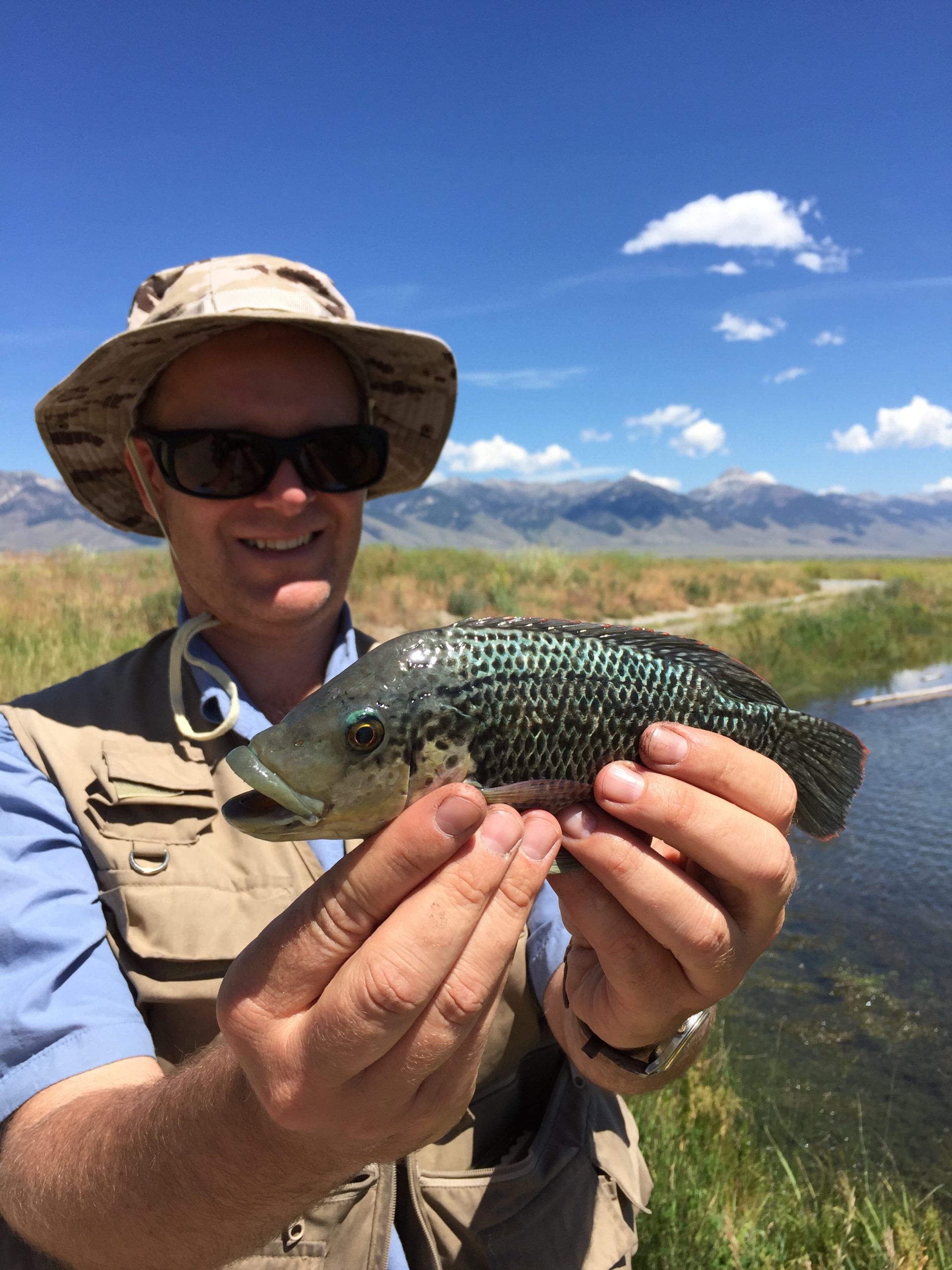
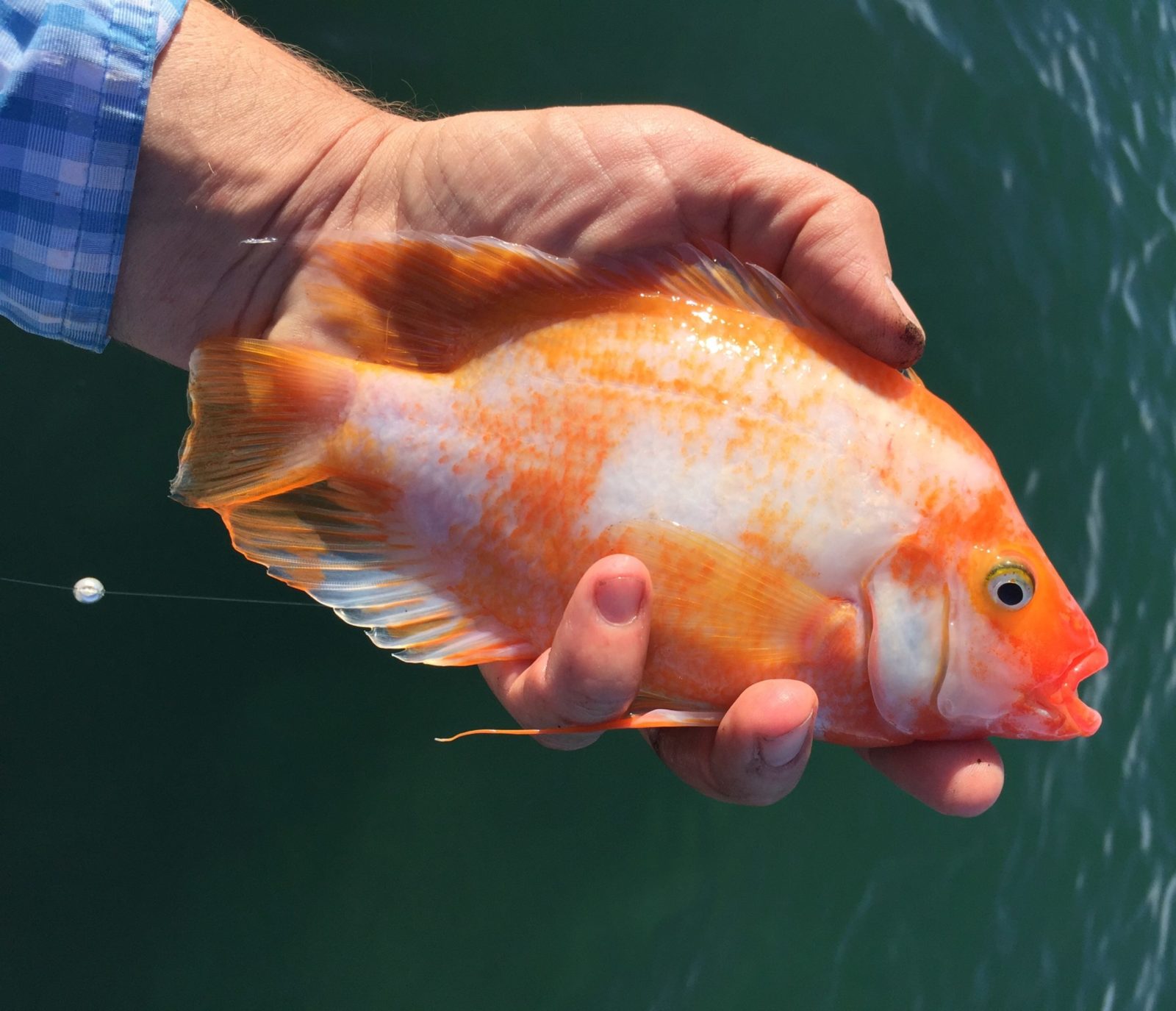

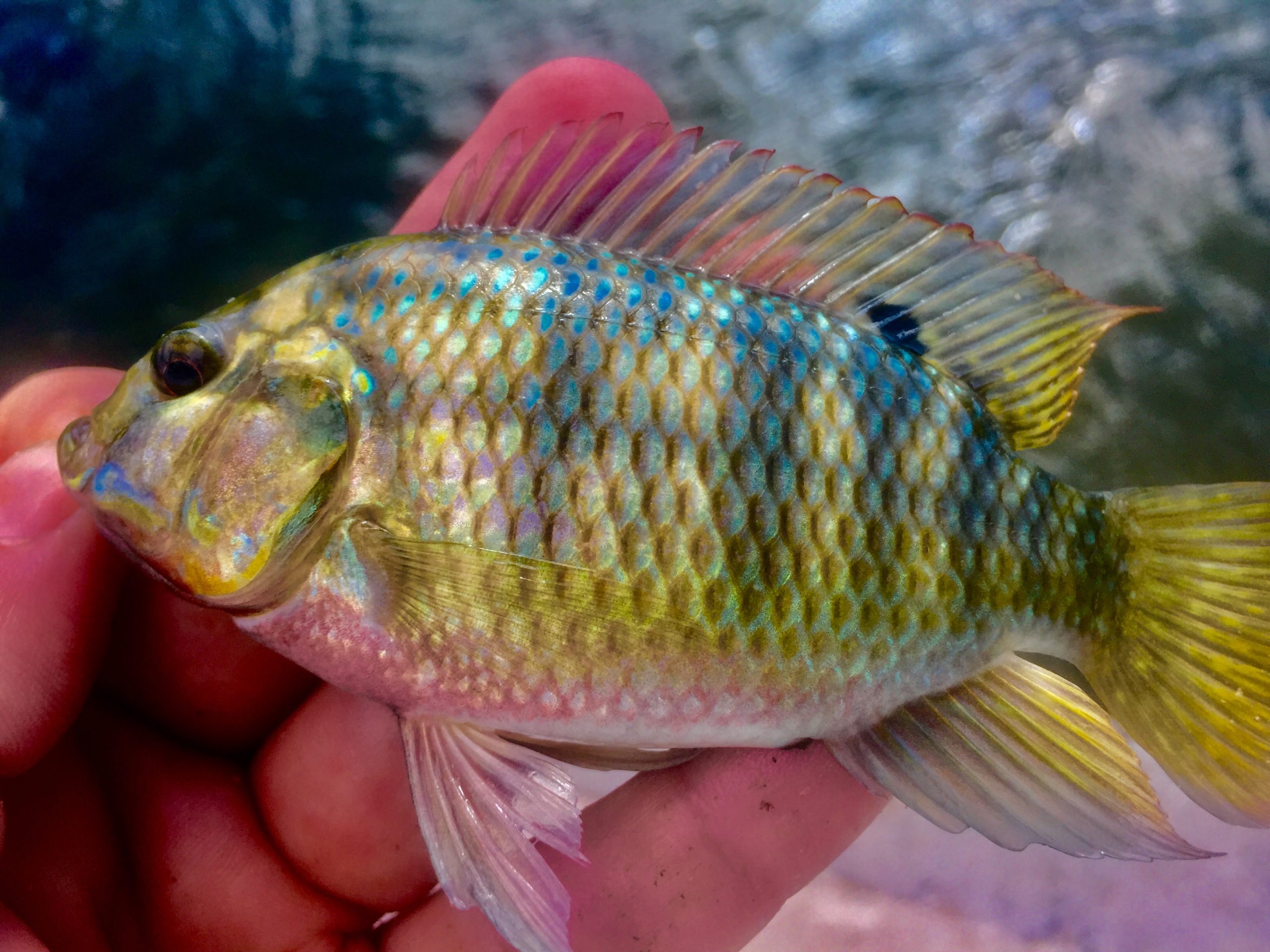
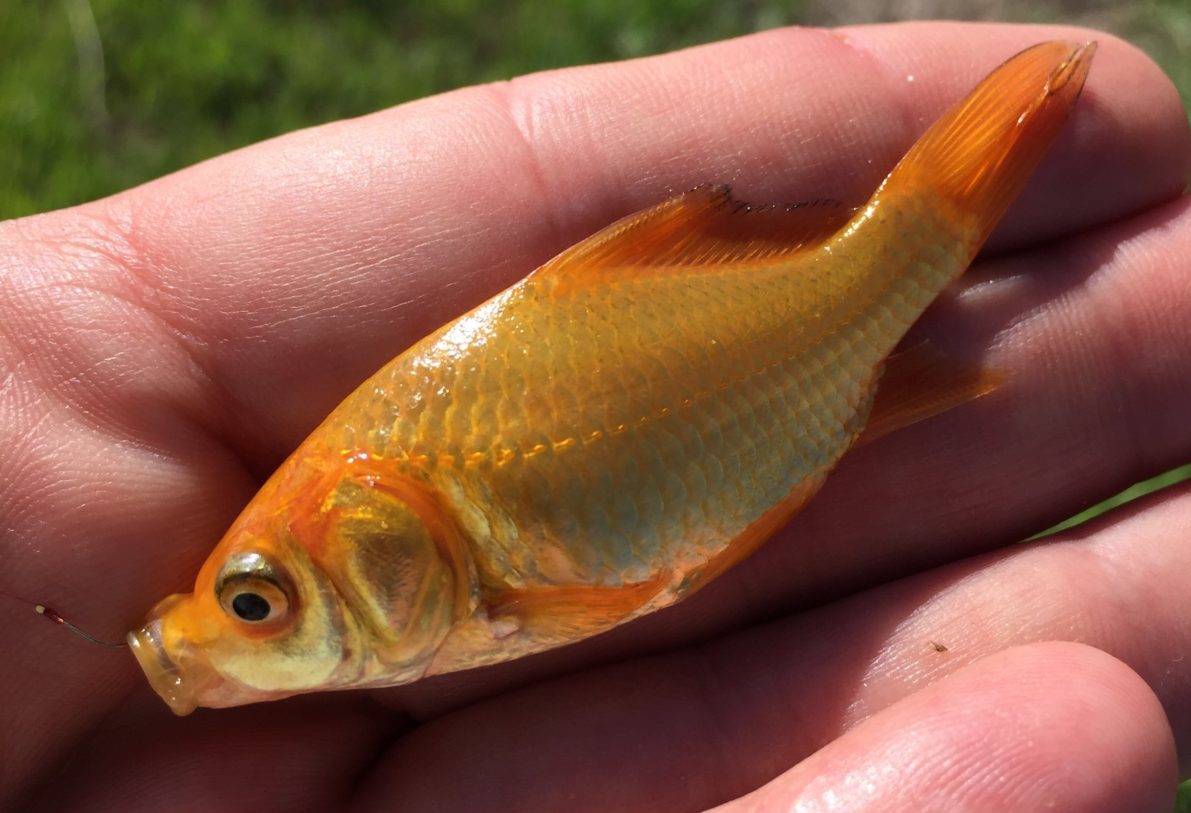


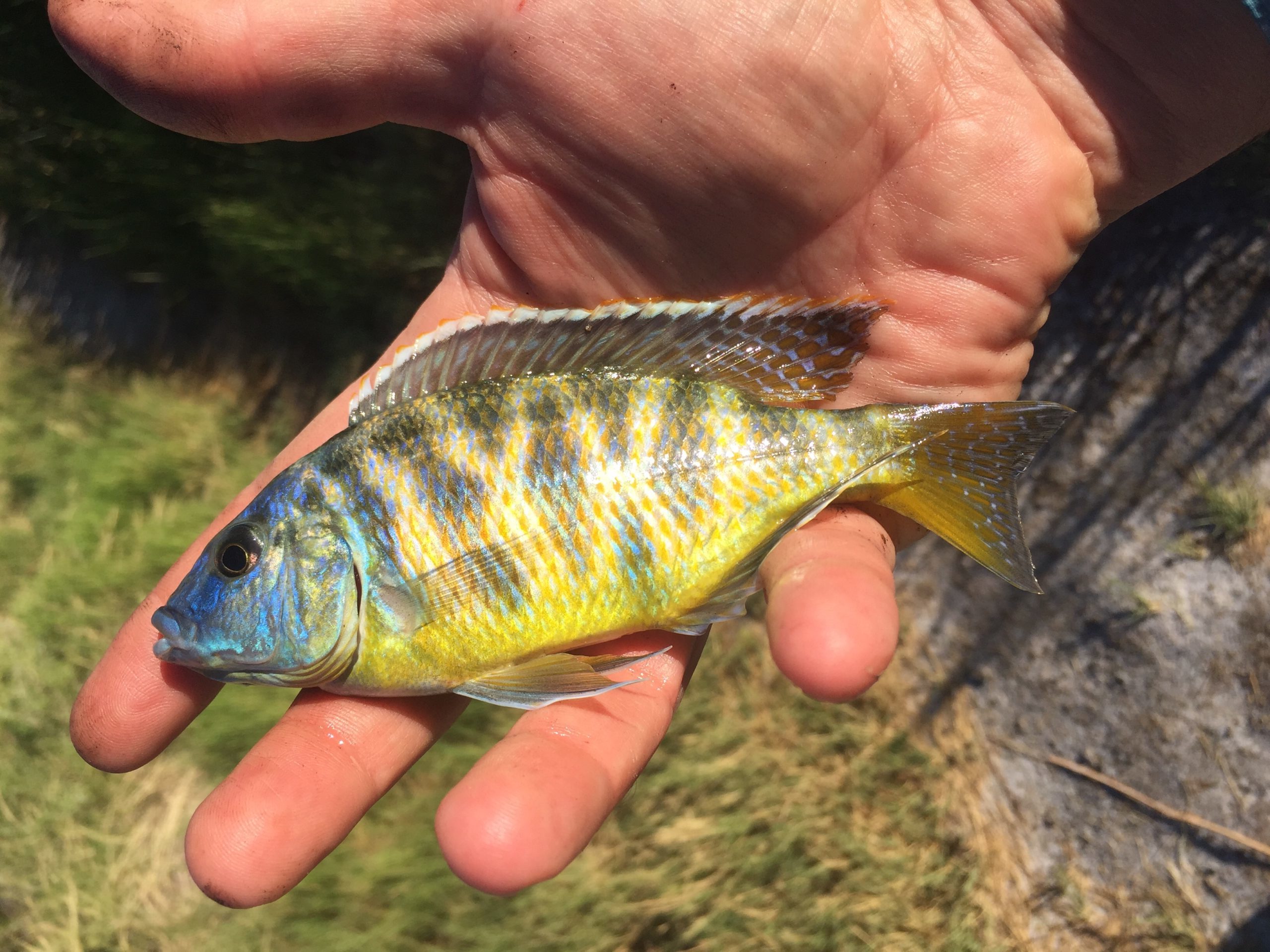

The Disconnect
Of course, setting a pet free is irresponsible and often cruel (most pets will starve or face an unpleasant end in the wild). But what is the conservation impact of tropical fish?
That can be difficult to determine. In Florida, where the fish swim freely through the connected Everglades waters, there could be significant effects on the native fish. In an isolated Rocky Mountain hot spring, the impacts are probably insignificant. The surrounding rivers and creeks are fed by melting snow, making them very cold most of the year. Any fish straying outside the springs would go belly up.
Barney Hot Springs is located about as far off the beaten path as you can get in southcentral Idaho, hours from the nearest significant town. I visited there with a fly rod in 2016, catching Mozambique tilapia, zebra mbuna and convict cichlid. These three tropical species had been documented in Barney for decades.

I returned a couple of years later to find a surprising scene: all three species appeared to be gone. That winter, an ice dam had blocked the local river, causing it to flood Barney – and wiping out the fish. When I first fished there, I’d occasionally see a skittish goldfish amongst the cichlids. Now, just six months after the ice flood, the more cold-tolerant goldfish dominated, swimming in large schools.
I’ve heard from recent visitors that other fish are starting to reappear in Barney. Maybe some survived the ice flood. Maybe someone has dumped new fish in there. I sense a return trip is in order.
But in other instances, there is concern that non-native fish could spread from the springs to connected waters. A warm springs in Grand Teton National Park was well-known for its populations of non-native convict cichilds, guppies, green swordtails and tadpole madtoms, often likened to a national park aquarium.
But park biologists found that the exotic species were getting very close to the nearby Snake River, from which they had almost endless opportunities to spread. So in 2018, managers treated the spring with rotenone to remove the non-native fish, hoping that native fish would recolonize the waters.
I visited in 2020, fishing rod in hand. I immediately began catching Utah chubs and redside shiners, a hopeful sign as both are native species. But then I hooked a convict cichlid, and another. Had they survived the fish eradication, or had they been recently released? It is hard to know. The human capacity to tinker appears endless. I imagine an endless cycle of tropical fish, coming and going, through no fault of their own.
Fishy Values
On the first day of my Utah lake foray, as I fished the main lake, the scuba diving class came up for a break. In the clear, blue waters, several participants had seen weird fish. “Those are Nile tilapia,” the instructor noted. “They’re a real problem here. They compete with the native fish, like bass.”
I wasn’t surprised. By state regulation, any Nile tilapia caught has to be killed. No catch and release for them. They’re a recognized invasive species. The largemouth bass are carefully managed and protected, and anglers take pride in releasing their trophies.
But the bass are no more native to Utah than the tilapia. Largemouth and smallmouth bass – and a host of other “game” species – have been introduced far and wide. While the cichlids may have been dumped illegally by pet owners, the bass have been stocked en masse by state wildlife agencies, often with fanfare and widespread support.
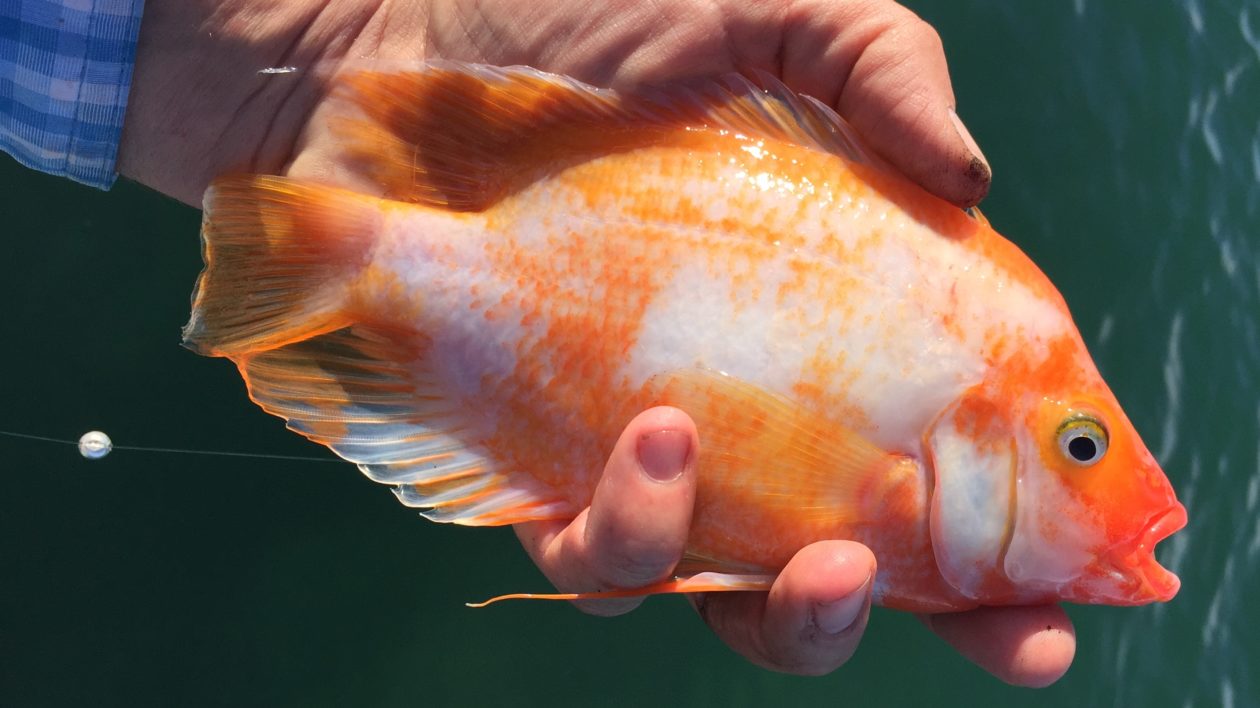
I post a photo of the bright-orange red devil cichlid on social media, and I’ll get comments about how horrible this is for the environment. And yes, any non-native species is a potential problem. The red devil looks so exotic. But in the American West, it’s not going far.
But it’s rare to cast in any water, including free-flowing rivers, and escape the presence of non-native game fish. They’re pretty much everywhere. No one raises an eyebrow, because we are used to them. I’ve long fished for brown trout and smallmouth bass, far outside their native range. And now I fish for tropical fish, too.
Just today, I received a message from a fish enthusiast who reported catching some weird cichlids on flies in the local river. Was I interested? I’m already packed. I’ll continue to work to conserve and restore native fish with a passion. But I’ll also face the Anthropocene with enthusiasm, in all its fishy weirdness, fishing rod in hand.
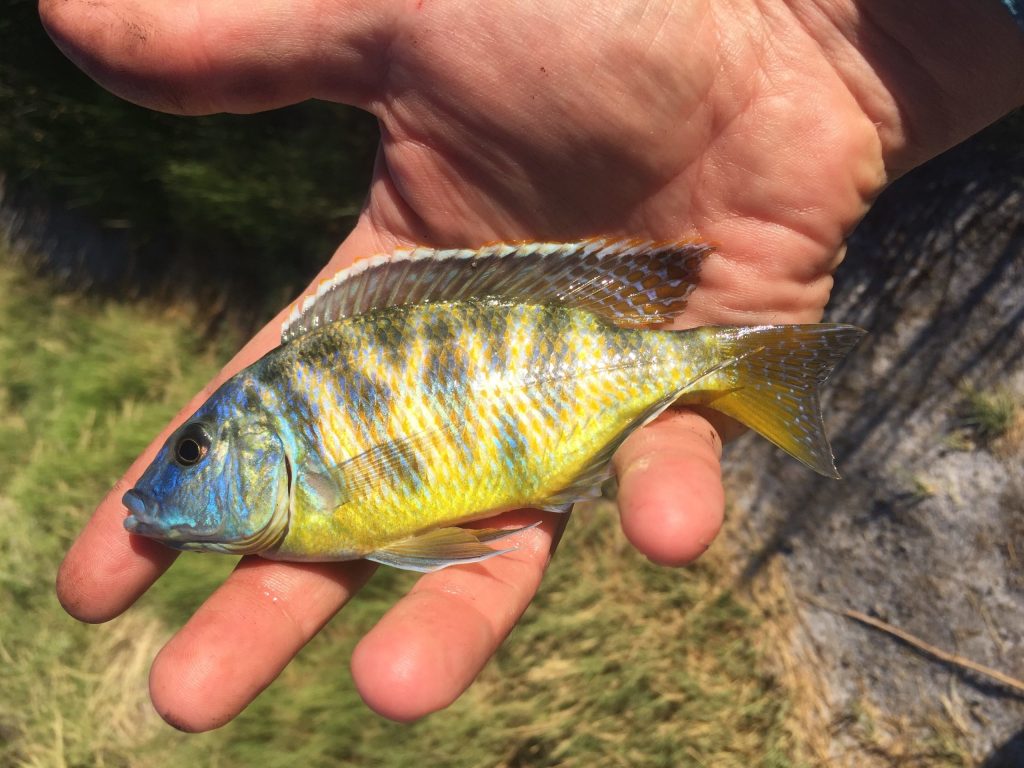



Hey great article and wonderful information on a topic I love….cichlids….and fishing in general. Do you have a regularly published channel or blog?
Thank you for the article it is very interesting! I appreciated you mentioning non native game fish. I have always found the hypocrisy mildly entertaining. I too enjoy finding the fish that doesn’t belong. I look forward to future accounts of your findings.
FROM MR PETER CASTELLINO, BOMBAY, 22-7-2022.
FISHES ARE HARDLY KNOWN
AND UNDERSTOOD ANIMALS IN THE ANIMAL KINGDOM AND ARE VERY DIVERSE AND VARIED.
THE VERY BEST WAY TO STUDY , KEEP AND BREED THEM IS THROUGH AN ONLINE OR OFFLINE COURSE WITH REFRESHER COURSES AND MAGAZINES ,BOOKS AND JOURNALS ETC.
FISH LIVE IN A DIFFERENT MEDIUM AND THOUGH SILENT ARE INTERESTING.
THE LIVESPANS ARE OFTEN SHORT AND THEY CAN SUDDENLY PASS AWAY WITHOUT WARNING.
MEDICINAL FISH LIKE THE MULEY FISH USED TO CURE ASTHMA IN HYDERABAD ,ANDHRA PRADESH / TELANGANA AND THE TURKISH DOCTOR FISH TO EAT UP DEAD SKIN.
DUE TO THEIR LARGERLY TRANQUIL AND SOOTHING NATURE THEY ARE KEPT IN DENTAL CLINICS TO EASE PAIN.
HOWEVER SOME FISH ARE AGGRESSIVE AND CANNABISTIC AND EAT UP OTHER SPECIES AND EVEN THEIR FRY .
FISHES ARE LARGERLY EGG LAYERS BUT A FEW OF THEM ARE LIVE BEARERS.
FISH CAN BE DE-SALINIZED FROM SALT WATER TO FRESH WATER.
NOWADAYS BIG FISH ARE KEPT AS THEY LIVE LONGER THAN SMALLER ONES.
SEA WATER FISH KEEPING IS EXPENSIVE AND DIFFICULT.
So Matt, what would you consider the native range for those brown trout you seek?
Hi Mick,
Brown trout are native to Europe. They have been widely introduced into North America. They are as exotic here as the cichlids in the hot springs; they’re just considered more socially acceptable. But I am a big advocate for native trout, as I have written about in a number of other stories.
Best,
Matt
“No one raises an eyebrow, because we are used to them.”
I raise an eyebrow. Prized game fish or not, if it’s invasive I don’t put them back in the water. Makes absolutely no sense to manage invasive, predatory fish for their benefit.
Your pages are amazing. I have been creating ceramic wall hangings of fish and your photos are great. I hope you are ok if I look at them for creating my love of fish art.
Lynn Hornbaker – Hand and Wheel Pottery